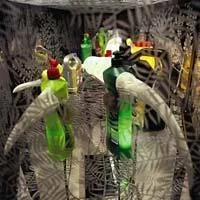Australian artist mourns our flora and fauna

A lament to New Zealand's extinct birds features in an art exhibition that has just broken attendance records at the Museum of Contemporary Art, Sydney. Fiona Hall: Force Field, opening July 12 at City Gallery Wellington, is an in-depth survey of work by one of Australia's leading and most innovative artists.
Mourning Chorus (2007-08) is a new work created especially for the show that was inspired by Hall's Residency at Auckland's Elam School of Fine Arts last year when she spent hours researching native flora and fauna at the Natural History Unit of the Auckland Museum. A lament to New Zealand's extinct birds features in an art exhibition that has just broken attendance records at the Museum of Contemporary Art, Sydney. Fiona Hall: Force Field, opening July 12 at City Gallery Wellington, is an in-depth survey of work by one of Australia's leading and most innovative artists.
Mourning Chorus (2007-08) is a new work created especially for the show that was inspired by Hall's Residency at Auckland's Elam School of Fine Arts last year when she spent hours researching native flora and fauna at the Natural History Unit of the Auckland Museum.Plastic containers with replica bird beaks are displayed in a startling coffin-shaped case in a work that comments on the vulnerabilities of our environment while playfully mocking the plastics that clog our landfills.
Curated by City Gallery's Paula Savage and Gregory O'Brien, with Vivienne Webb (Museum of Contemporary Art, Sydney), the exhibition also features sculpture, installation, photography and video works from the 1970s to the present.
Australian arts commentator John McDonald believes Hall's imagination to be "so fertile that an artist could base an entire career on any of the phases she has explored and discarded". Hall possesses "an offbeat sense of humour and a work ethic that would put the pyramid builders to shame". - Sydney Morning Herald, 19 April 2008
Hall transforms everyday materials and objects, incorporating a diverse array of techniques, that are often domestic in their origins: Coca-Cola cans are shredded and knitted into a cloak (The Social Fabric, 1996); US dollar bills are woven to create exquisite birds' nests (Tender, 2003-05); Tupperware containers are transformed into a stunning backlit installation (The Price is Right, 1994); glass beads are threaded and knitted into an intricate flower or a skull (Understory, 1999-2004); and in her most well known series of works (Paradisus terrestris, 1998-99), sardine tins are reconfigured into miraculous sculptures.
Born in Sydney in 1953, Fiona Hall established herself as an important Australian photographer in the 1970s and then widened her practice to include sculpture and installation. In 1997 she received the Contempora 5 Art Award and in 1999 the prestigious Clemenger Art Award. She was appointed to the Advisory Council of the Australian National University's Centre for the Mind in 1998. Hall has exhibited widely in Australia and internationally, and is represented in every major public collection in Australia.
Fiona Hall: Force Field12 July (from noon) until 19 OctoberCity Gallery Wellingtoncitygallery@wmt.org.nz, www.citygallery.org.nzAdmission: FREE
07/07/08